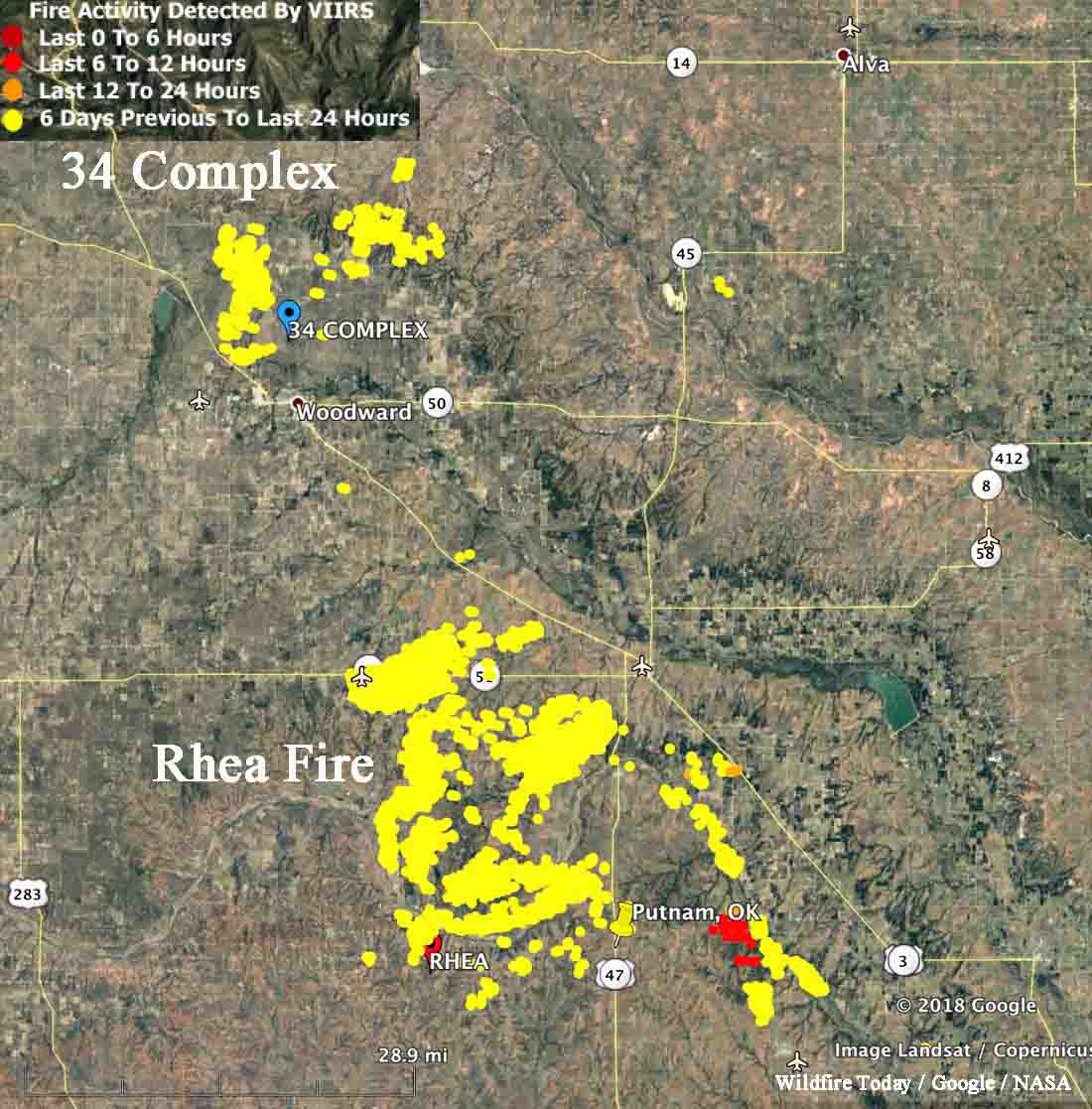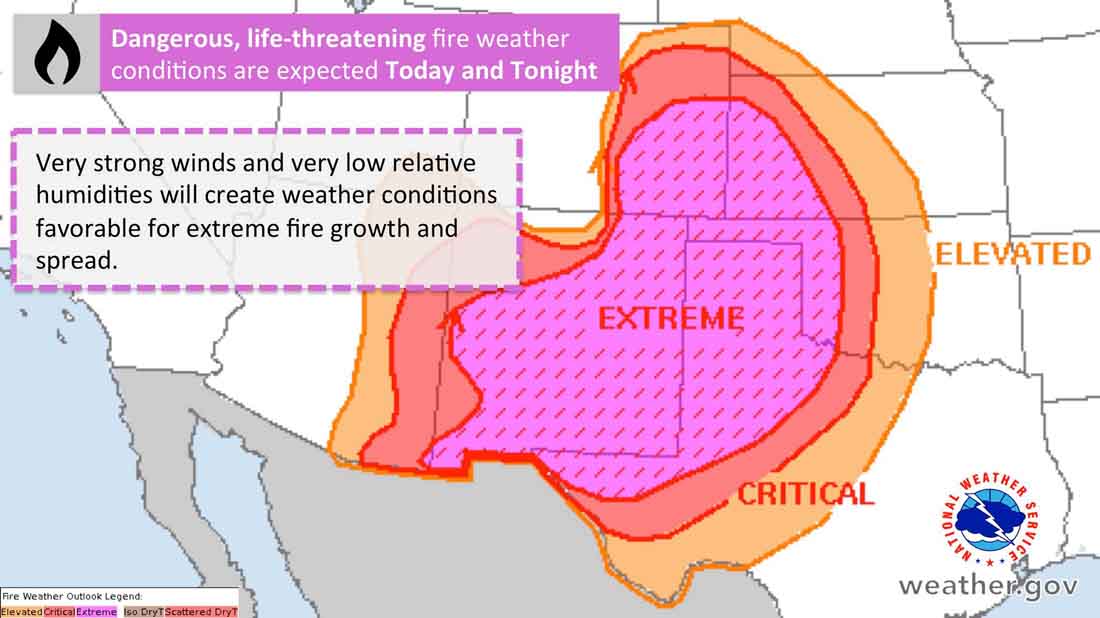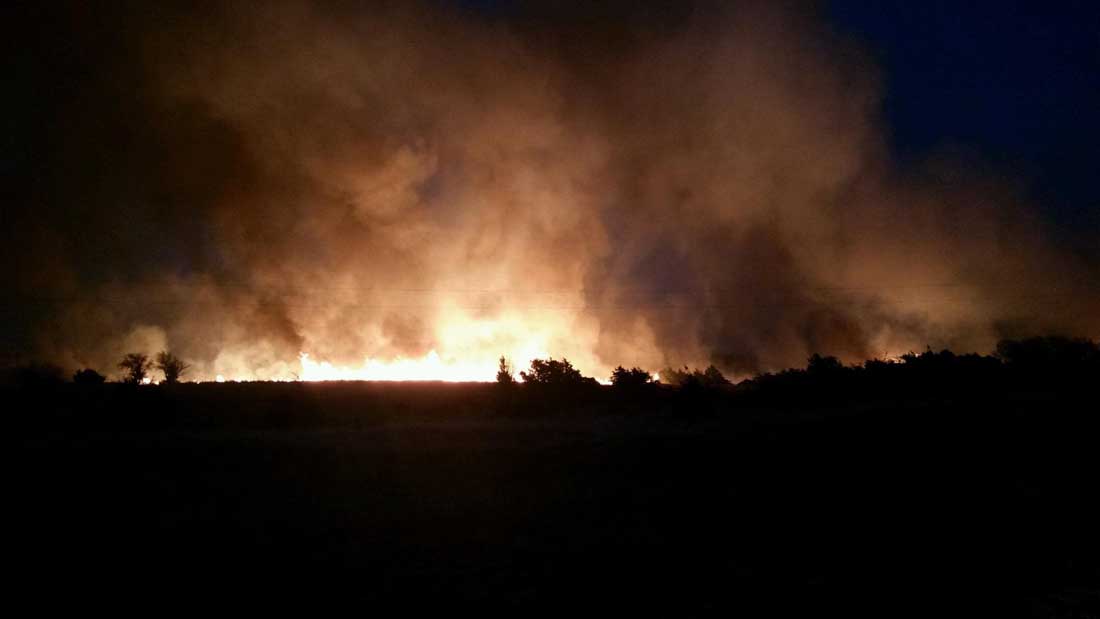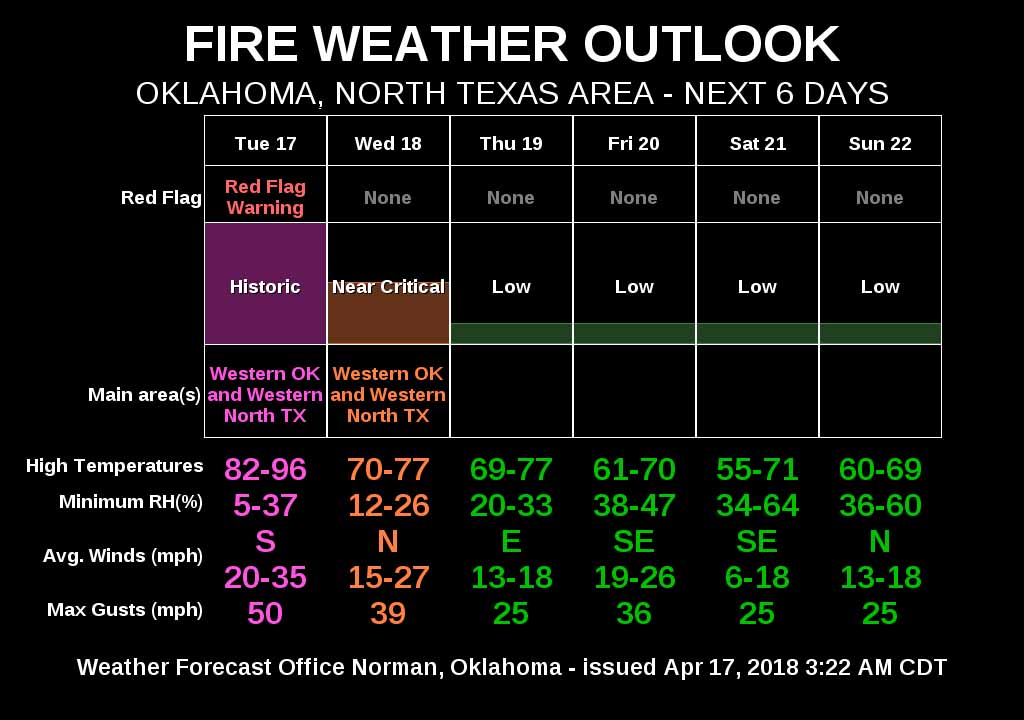Above: satellite photo showing the location of the 117 fire south of Colorado Springs. The red dots on the map represent heat detected by a satellite at 2:30 p.m. MDT April 17, 2018.
(UPDATED at 11:33 a.m. MDT April 18, 2018)
A more accurate estimate of the size of the 117 Fire between Colorado Springs and Pueblo puts it at 41,000 acres. Military helicopters, Chinook and Blackhawks, are assisting firefighters by dropping water.
A deputy sheriff said he was driving at 35 mph near the fire Tuesday and it was moving faster than he was.
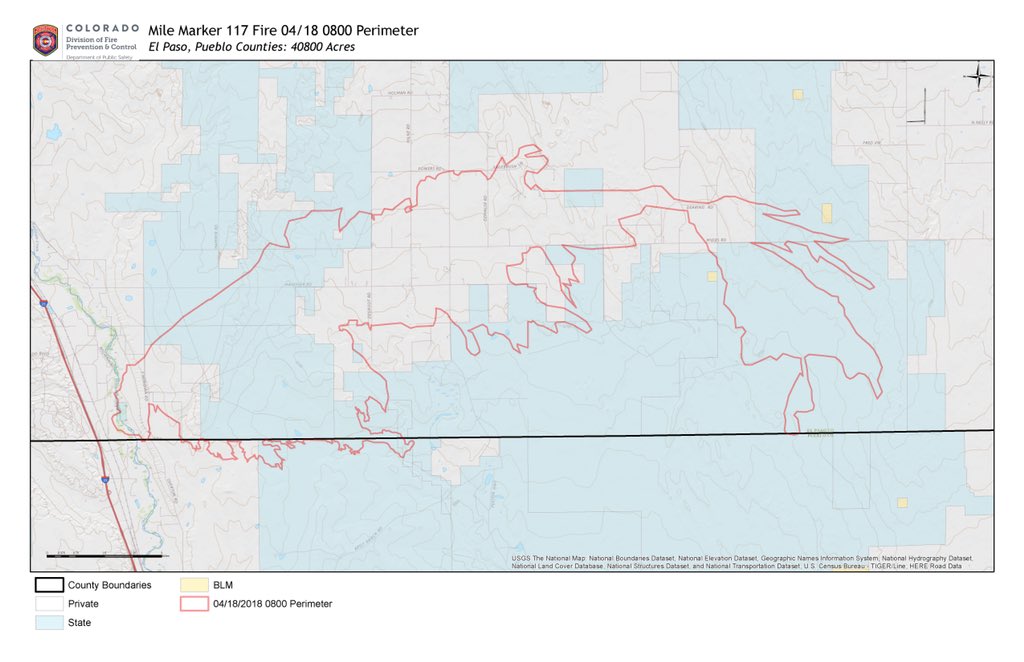
***
(UPDATED at 7:15 a.m. MDT April 18, 2018)
The El Paso County Sheriff’s office reported Wednesday morning that the 117 Fire between Colorado Springs and Pueblo, Colorado has burned an estimated 60,000 acres. The fire is still active in El Paso and Pueblo Counties but the wind speeds recorded at Fort Carson and Pueblo have decreased Wednesday morning — calm to five mph, compared to gusts of 50 to 80 mph Tuesday afternoon.
Morning firefighter briefing #117Fire pic.twitter.com/Bcq4abffYO
— El Paso County PIO (@epcpio) April 18, 2018
The wind on Tuesday was too strong for helicopters, air tankers, or Colorado’s Multi-Mission Aircraft to fight or even map the fire, but officials hope to get the MMA into the air this morning to give firefighters a better idea of the scope of the blaze.
****
(Originally published at 9:38 p.m. MDT April 17, 2018)
The 117 Fire has burned at least 4,000 acres about halfway between Colorado Springs and Pueblo, Colorado. The sheriff’s office reports 10 structures have burned. The fire started Tuesday along the Interstate 25 corridor about halfway between Colorado Springs and Pueblo. It spread quickly pushed by very strong winds.
There are few public weather stations near the fire but a station north of Pueblo recorded sustained wind speeds between 9 a.m. and 2 p.m. of 45 to 60 mph gusting at more than 80 mph. The minimum relative humidity was four percent. A weather station at Fort Carson south of Colorado Springs had winds of 30 to 40 gusting above 50 mph during the same period.
Until about 2 p.m. the wind was out of the southwest. The extreme speed created a very narrow fire that grew seven miles to the northeast by 2:30 p.m. Monday. Later in the afternoon the wind shifted to come out of the south and then the southeast and east. The shifting direction could cause firefighters to be caught unexpectedly near a rapidly advancing flank or head of the fire.
The El Paso County Sheriff’s office announced mandatory evacuations on their Facebook page.
There are reports that a law enforcement patrol vehicle burned and a fire engine was damaged by the quickly spreading fire.
The county declared the fire a disaster and they are in negotiations with the state to take over the fire.
The area was under a Red Flag Warning Monday and Monday evening. The forecast for the 117 Fire area Monday night calls for 20 mph winds gusting to 30-40 decreasing to 7 mph by 8 a.m. Tuesday. The high temperature Tuesday should be 59 degrees with 13 percent relative humidity along with much calmer winds.
The wind on Monday was far too strong to allow any helicopters or air tankers to take suppression action on the fire, but that will probably change on Tuesday.
And here’s another night-time look at the #117Fire. As you can see (& hear), the winds & flames really haven’t let up at all @KOAA pic.twitter.com/llYwy2mCi6
— Sam Kraemer (@SamKraemerTV) April 18, 2018
#Breaking: #117Fire burning S. Squirrel Creek Road and Myers. pic.twitter.com/YT4agkegmZ
— Eric Ross (@EricRossKOAA) April 18, 2018
Denver International Airport stopped all incoming and outgoing flights Tuesday afternoon due to strong winds and blowing dust. #COwx https://t.co/KcFN4L2Prz
— CO Wildfire Info (@COWildfireInfo) April 17, 2018



